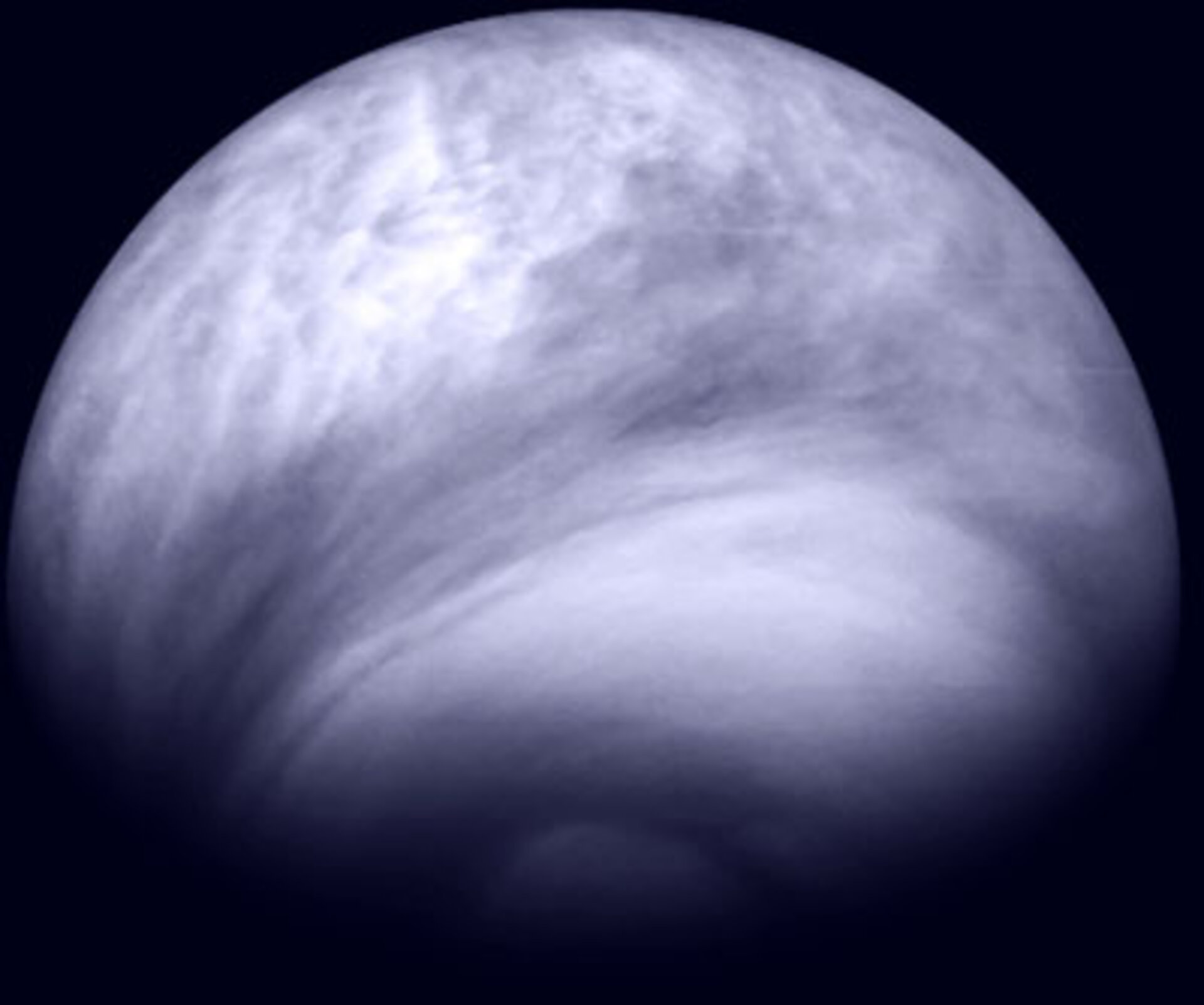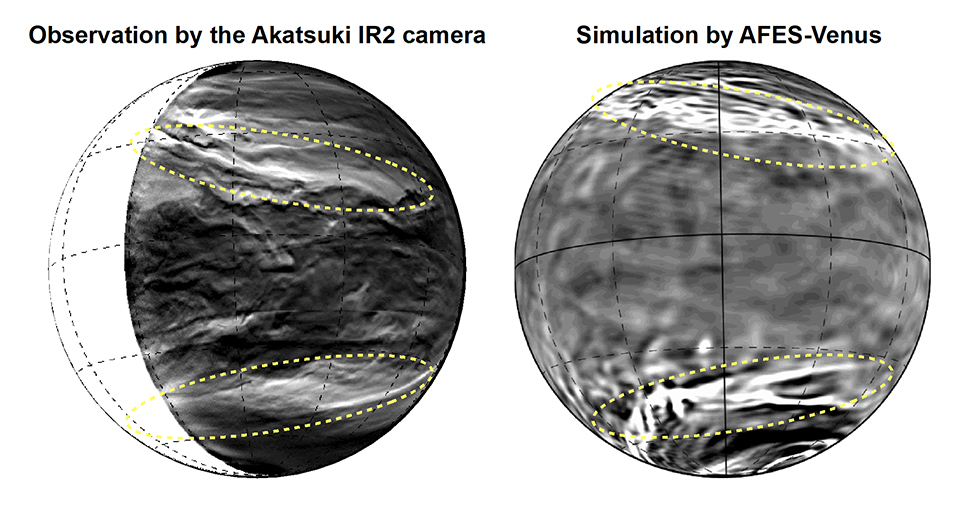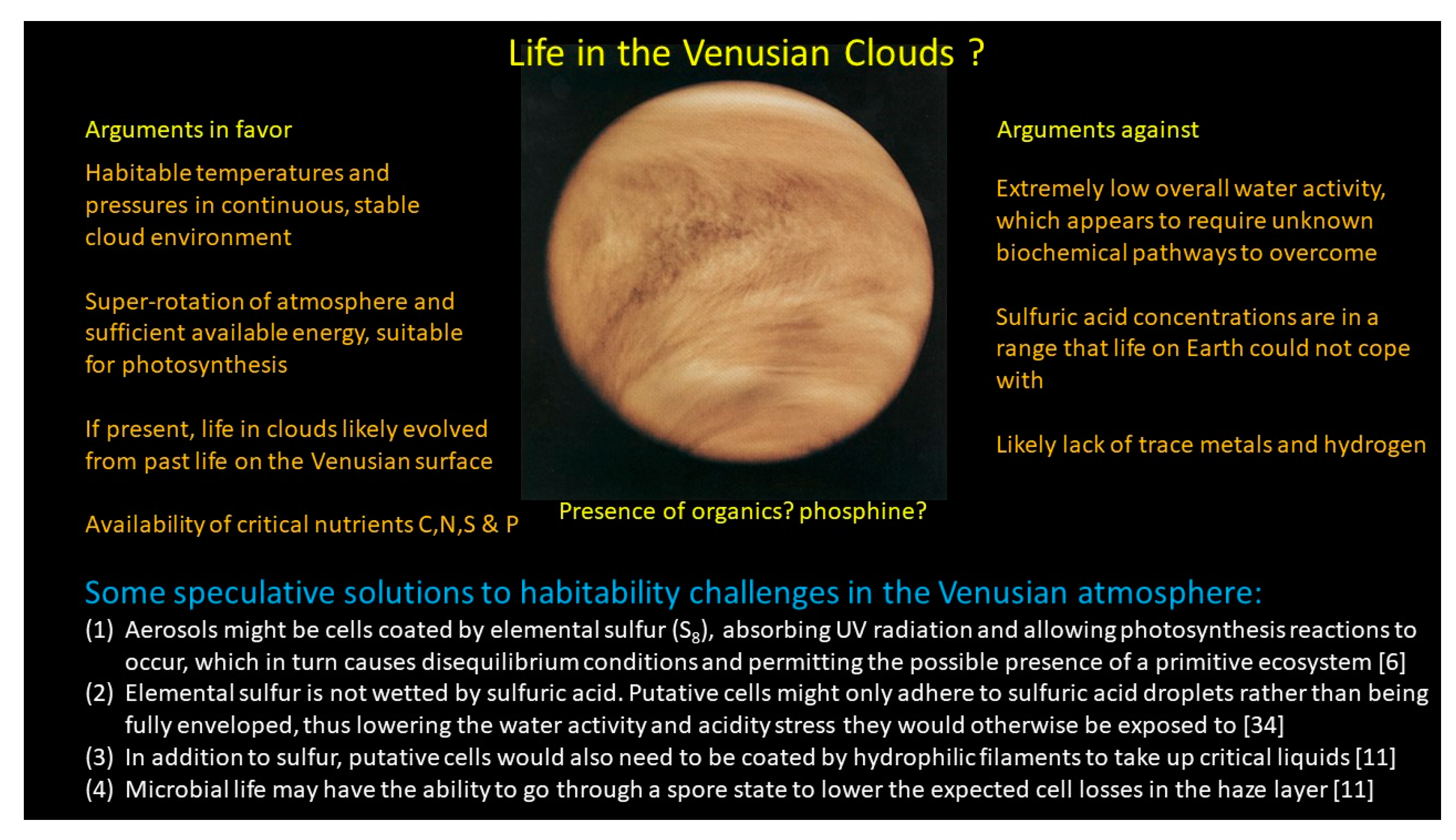Its the hottest planet in our solar system even though Mercury is closer to the Sun. Maxwell Montes near 0 degrees longitude is seen in the upper left.

Esa New Details On Venusian Clouds Revealed
The cloud structure in the atmosphere of Venus can be described as _____.

. What are the clouds of Venus made of. This cloud layer is at a temperature of -30C. Venus can be best described with two words.
The upper plane shows surface features seen by Magellans imaging radar draped over a three-dimensional representation of surface topography seen by the altimeter. A a clear layer near the surface a haze layer above it and a high thick layer of dense permanent cloud b a permanent and thick cloud layer extending almost to ground level c isolated clouds forming and dissipating all the time with clear sky between them. Mostly smooth resembling rolling plains with modest highlands and lowlands B.
Venus has a thick toxic atmosphere filled with carbon dioxide and its perpetually shrouded in thick yellowish clouds of sulfuric acid that trap heat causing a runaway greenhouse effect. Ultraviolet observations of the cloud layer revealed an intriguing phenomenon. Venus clouds reflect most of the sunlight shining on the planet and make it the brightest object in the sky after the Sun and Moon.
The sulfuric acid clouds on Venus. 75 of Earths. B almost 70 km.
Many ancient civilizations observed and worshipped Venus which had a different. The cloud structure in the atmosphere of Venus can be described as. In the north they form filaments oriented from the east to the west and at the poles they form a complete blanket.
The weather on Venus can best be described as. D just over 20 km. Venus Cloud Patterns.
These three perspective images show the structure of Venus at the surface in the crust and in the mantle. The radius of Venus is. Fascinating UV phenomenon in the atmosphere of Venus.
What are the clouds of Venus made of. The surface of Venus can best be described as. The radius of Venus is.
COMPOSITION AND STRUCTURE OF THE CLOUDS OF VENUS. Mon Jan 01 000000 EST 1968 Research Org. This picture of Venus was taken by the Galileo spacecrafts Solid State Imaging System on February 14 1990 at a range of almost 17 million miles from the planet.
These are formed by the very rapid photooxidation of carbonyl sulfide in the upper atmosphere. Surface temperatures on Venus are about 900 degrees Fahrenheit 475 degrees Celsius hot. A highpass spatial filter has been applied in order to emphasize the smaller scale cloud features and the rendition has been colorized to a bluish hue in order.
The clouds of Venus consist of a fine sulfuric acid aerosol similar to that found in the earths stratosphere. The acid aerosol on Venus appears to be uniformly mixed with the gas at least in the visible layers and possibly down to the cloud. The predicted mixing ratio for water is.
The clouds are best described as an extensive haze since the predicted particulate scale height probably exceeds the gas scale height within the layer. Of California San Diego La Jolla. The clouds seem fluffy but form large compact groups.
As a result Venus is the hottest planet in our solar system. The surface of Venus can best be described as. COMPOSITION AND STRUCTURE OF THE CLOUDS OF VENUS.
The entire surface of Venus is constantly covered by clouds. The sulfuric acid clouds on Venus. The sulfuric acid clouds on Venus Are confirmed to a narrow layer about 60km above the planets surface and cover the whole planet One chemical element that plays a major role in the coloring and chemistry of the Venusian atmosphere and clouds.
Learn vocabulary terms and more with flashcards games and other study tools. Mostly clear sky with occasional thin high clouds and dust B. These are formed by the very rapid photooxidation of carbonyl sulfide in the upper atmosphere.
Are confined to a narrow layer about 60 km above. The clouds of Venus consist of a fine sulfuric acid aerosol similar to that found in the earths stratosphere. Venus is closer to the Sun so it gets more intense sunlight Planets cloud-over is highly reflective reflecting 60 of the suns light As seen from Earth the.
A clear layer at the surface a haze layer above it and then a high thick layer of permanent cloud. A are confined to a narrow layer about 60 km above the planets surface and cover the whole planet. Contains shield volcanoes and coronae C.
The atmosphere of Venus is mostly composed of what. The cloud structure in the atmosphere of venus can be described as A. Which of the following planets takes longer to rotate once than revolute and also rotates clockwise.
C zero because there are no clouds on Venus. Observations of the dark side of the planet Venus at infrared wavelengths between 15 and 25 µm have shown it to be anomalously bright in portions of this waveband and to exhibit. These clouds are made up mostly of carbon dioxide which has a greenhouse effect keeping in the Suns heat like a giant blanket.
It is proposed that the visible cloud deck on Venus is composed of droplets of sulfuric acid. Venus is visible with the naked eye as an evening star until a few hours after sunset or as a morning star shortly before sunrise. The clouds are best described as an extensive haze since the predicted particulate scale height probably exceeds the gas scale height within the layer.
B extend from the surface to. A clear layer at the surface a haze layer above it and then a thick layer of permanent cloud. It is proposed that the visible cloud deck on Venus is composed of droplets of sulfuric acid.
Lewis J S Publication Date.

Venus Cross Section Explosion Structure Planets Images Planets Venus

Giant Pattern Discovered In The Clouds Of Venus Nasa Solar System Exploration

Life Free Full Text The Case Or Not For Life In The Venusian Clouds Html

Venus Is The Second Planet Closest To The Sun Although Venus Is The Second Planet From The Sun It Is Hotter Than M Solar System Planets Planet Project Planets
0 Comments